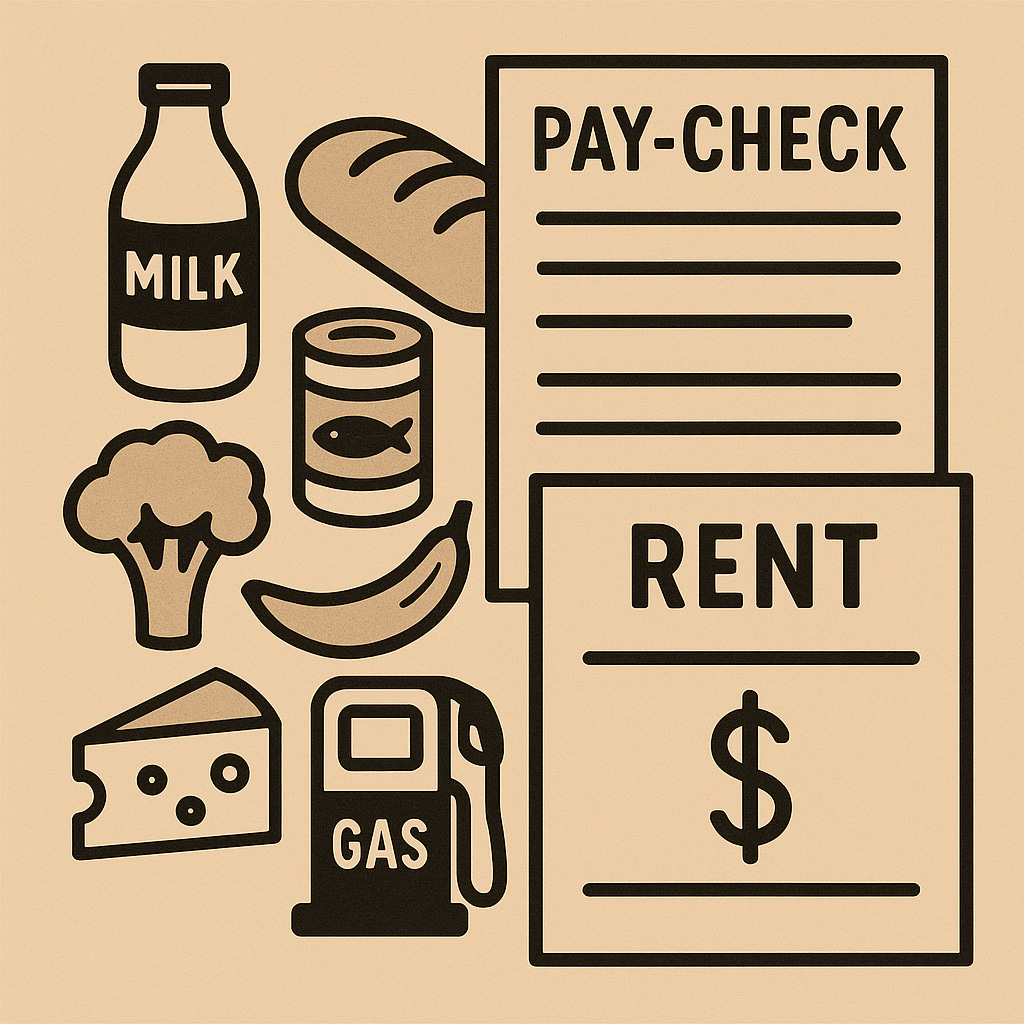Why Prices Don’t Fall
Inflation doesn’t pass; it settles in. And politicians are counting on it.
Why Prices Don’t Fall
Inflation doesn’t pass; it settles in. And politicians are counting on it.
By Jim Reynolds | www.reynolds.com
Every few months a politician vows to “bring prices down,” as if inflation were a rubber band instead of a ratchet. But history and logic agree on one simple point: once prices rise, they almost never return to where they were.
Inflation doesn’t reverse—it resets. When the price of groceries, cars, or rent doubles, that becomes the new floor. You can cool inflation by slowing how fast prices rise, but you can’t rewind the entire economy without breaking it.
Every price increase builds its own scaffolding. Wages rise to meet higher costs, suppliers push up their contracts, landlords and governments index rates to the new normal. The entire system locks in around the latest number.
Ask yourself this: now that the government has raised your Social Security check, are you volunteering to have them lower it now that inflation is supposedly “under control”? I didn’t think so. Are workers going to give back their inflation-adjusted pay raises? Of course not. And is there a chance in hell your landlord will lower your rent just because heating oil dropped 9% in your area? Keep dreaming.
No one ever votes to make themselves poorer. That’s why prices, broadly speaking, never go down.
There are only two forces powerful enough to push prices lower: technological leaps or economic disaster. Computers, televisions, and solar panels get cheaper because innovation beats scarcity. Everything else—from food to fuel to housing—only falls in price during full-blown recessions or deep depressions, when demand collapses and people can’t buy anything at all.
Look at the record. After World War II, prices jumped about 20 percent and stayed there. In the 1970s, inflation hit double digits; the painful Volcker recession slowed it, but prices never returned to their pre-1973 levels. The COVID stimulus of 2020–2023 added another layer—roughly 20 percent across the board—and that’s now baked into the structure. Even if inflation falls to zero, that new cost base remains.
Prices don’t fall; they re-anchor. It is a fantasy to think otherwise. A myth. Something that never happens in real life.
So yes, technically we could “lower prices” by orchestrating a full-blown economic failure. Why not plan a nice, healthy, “controlled depression”? That would certainly drive costs down—along with wages, savings, and sanity. Sure, prices would fall, but so would everything else. Eighty percent of the population would be in peril, and the other twenty would wish they were. That’s not a viable trade-off; it’s a suicide pact.
Andy used to say he remembered the Depression well enough to know you don’t want another one. “Everybody got poor at the same time,” he said, “and nobody thought it was a bargain.” He was right. The only thing that came down faster than prices were people.
So maybe the real political strategy isn’t to fight inflation at all—but to plan it. Fire up the printing presses, flood the system, drive prices through the roof, and leave office smiling. The next guy takes the heat. By the time voters realize it wasn’t his fault, you’ll be long gone—on a beach somewhere, drink in hand, enjoying your legacy and your pension.
Is there a chance somebody planned it that way? Now that’s a plan: burn the barn down, sell the ashes, and let someone else sweep the floor.



